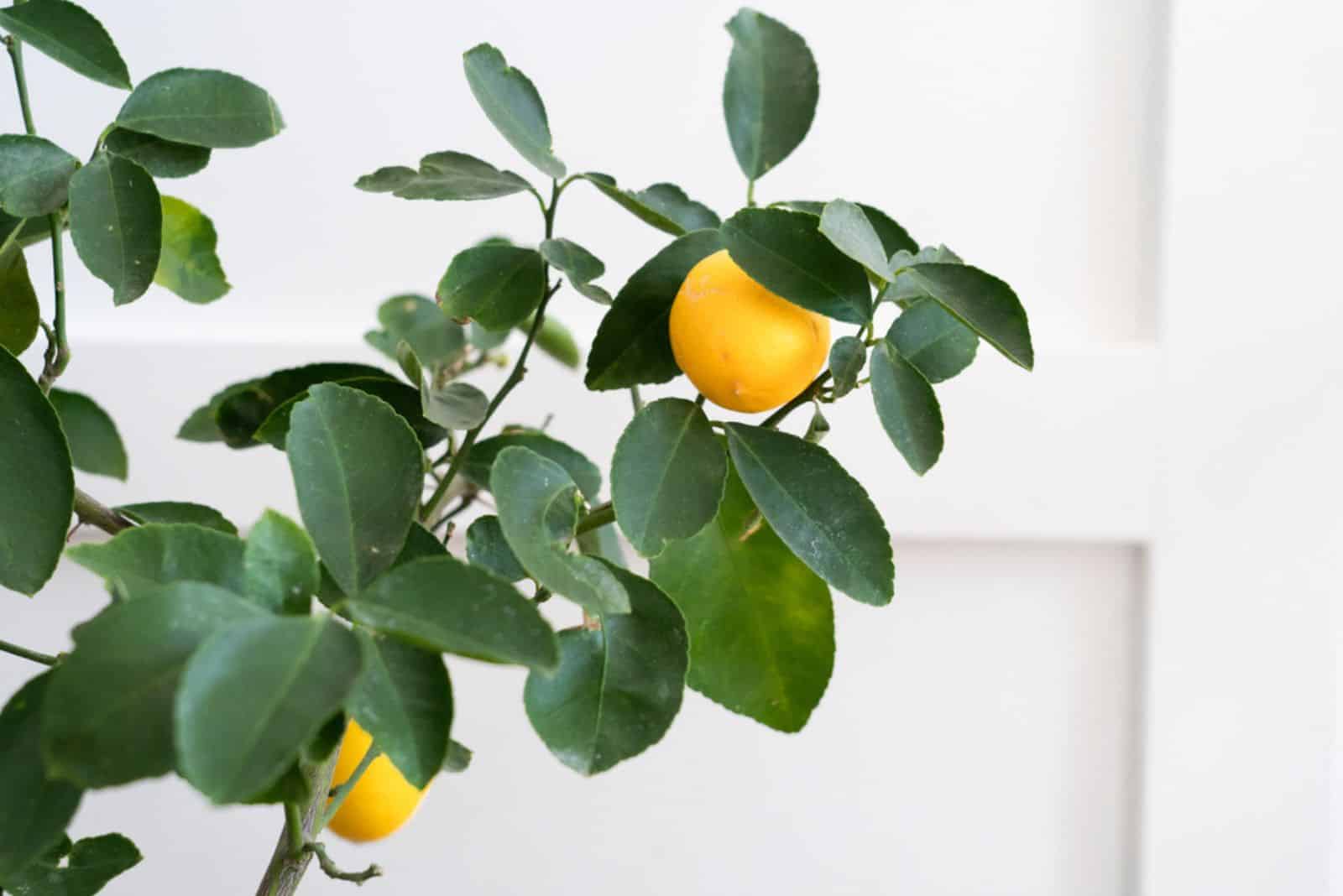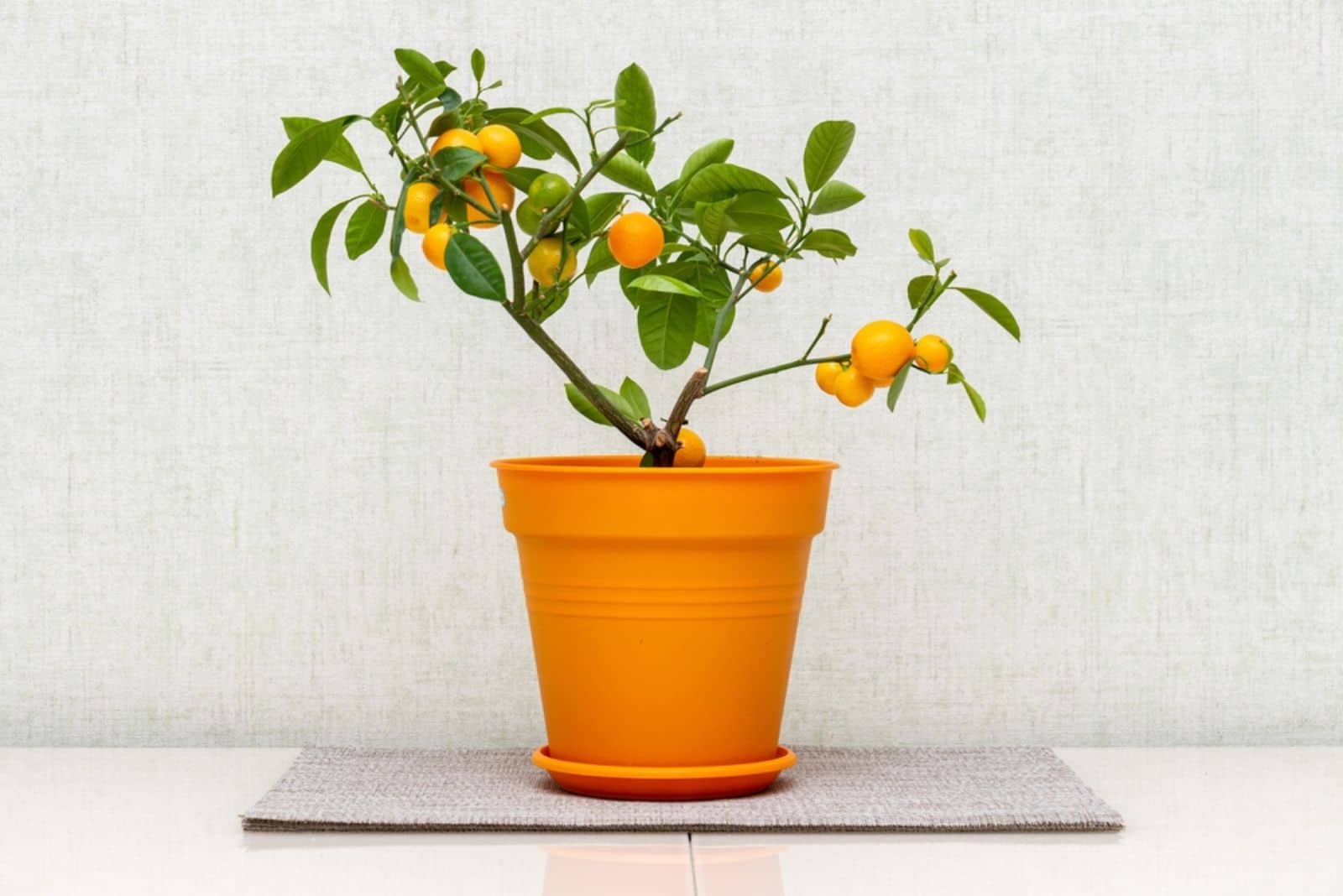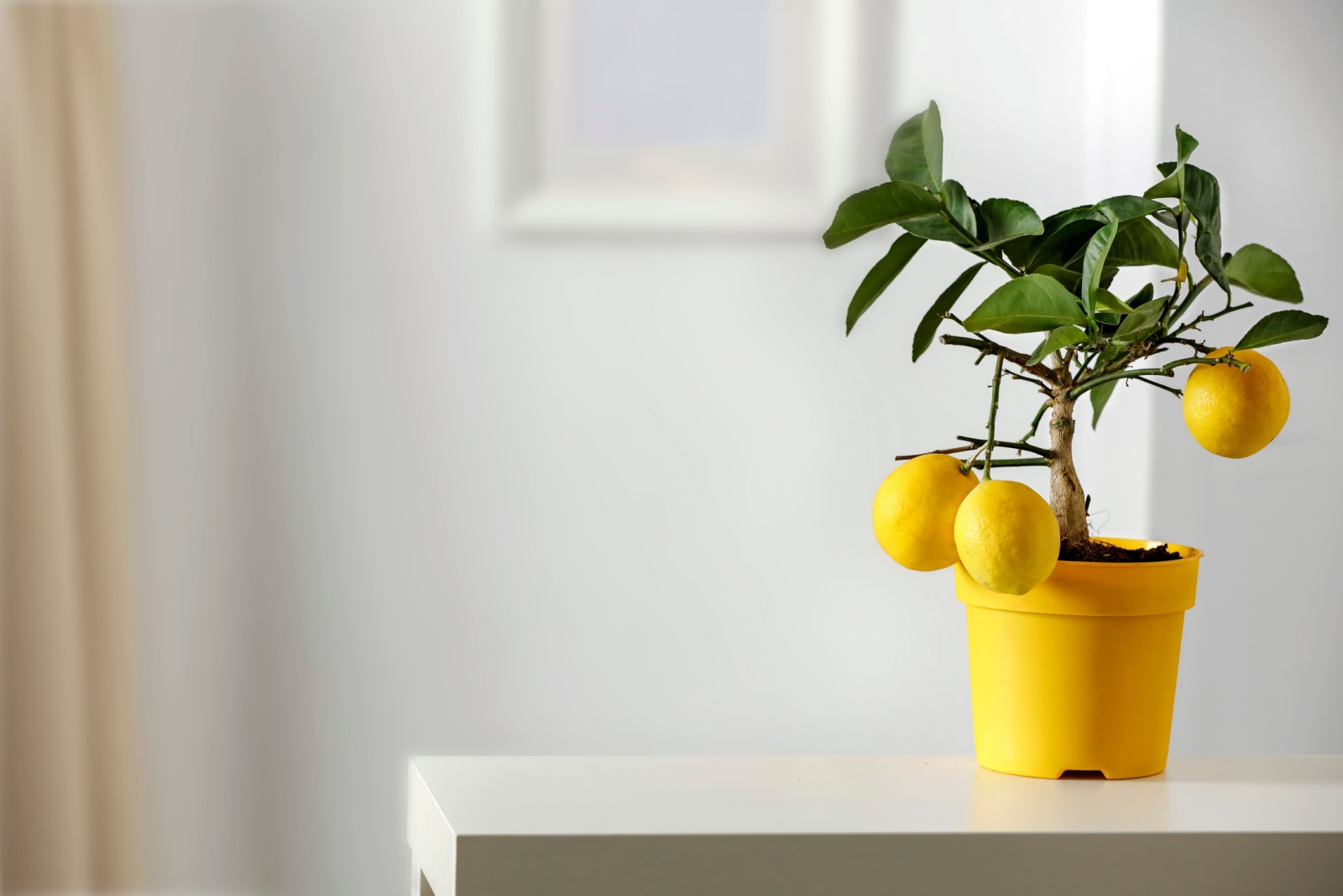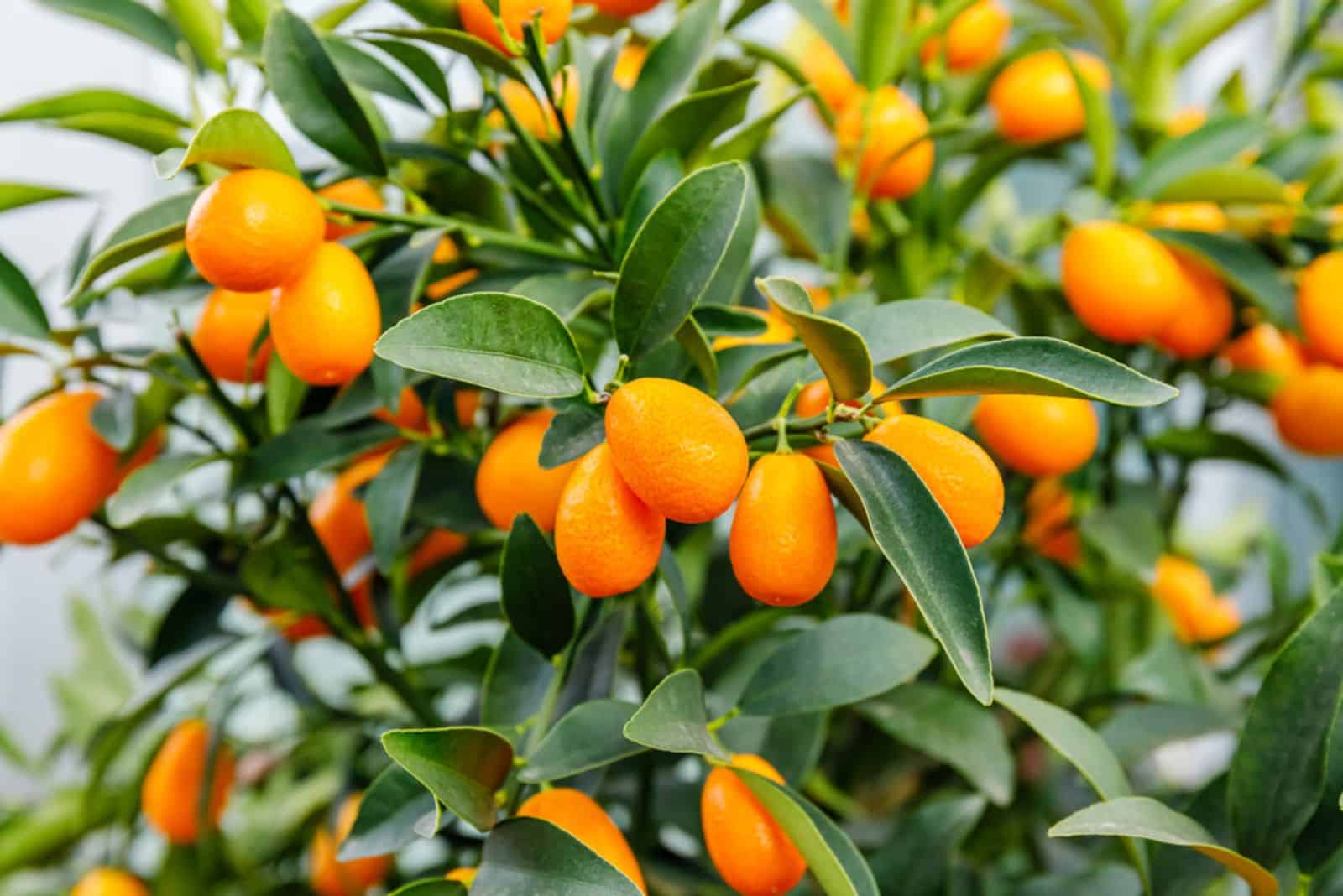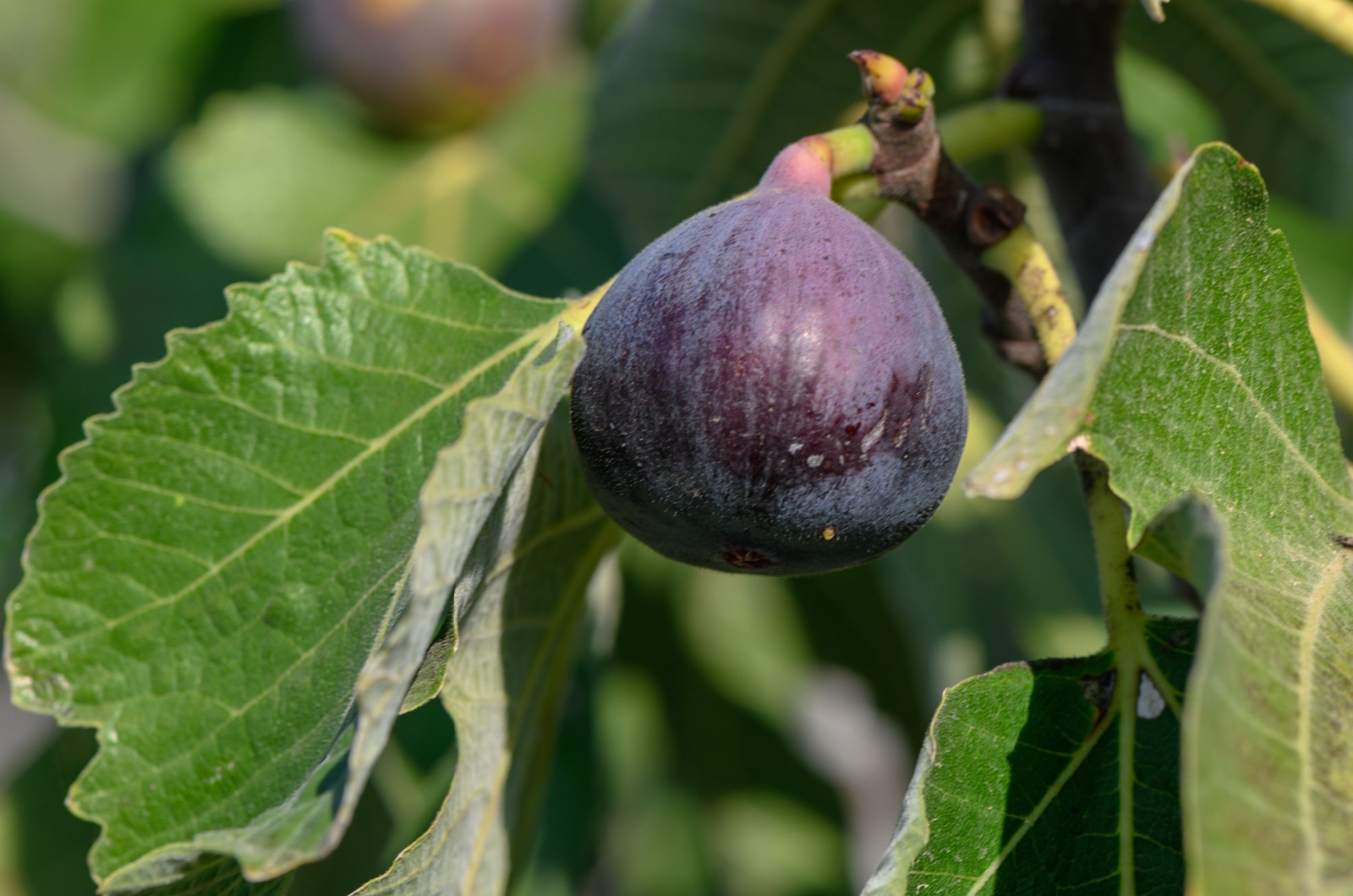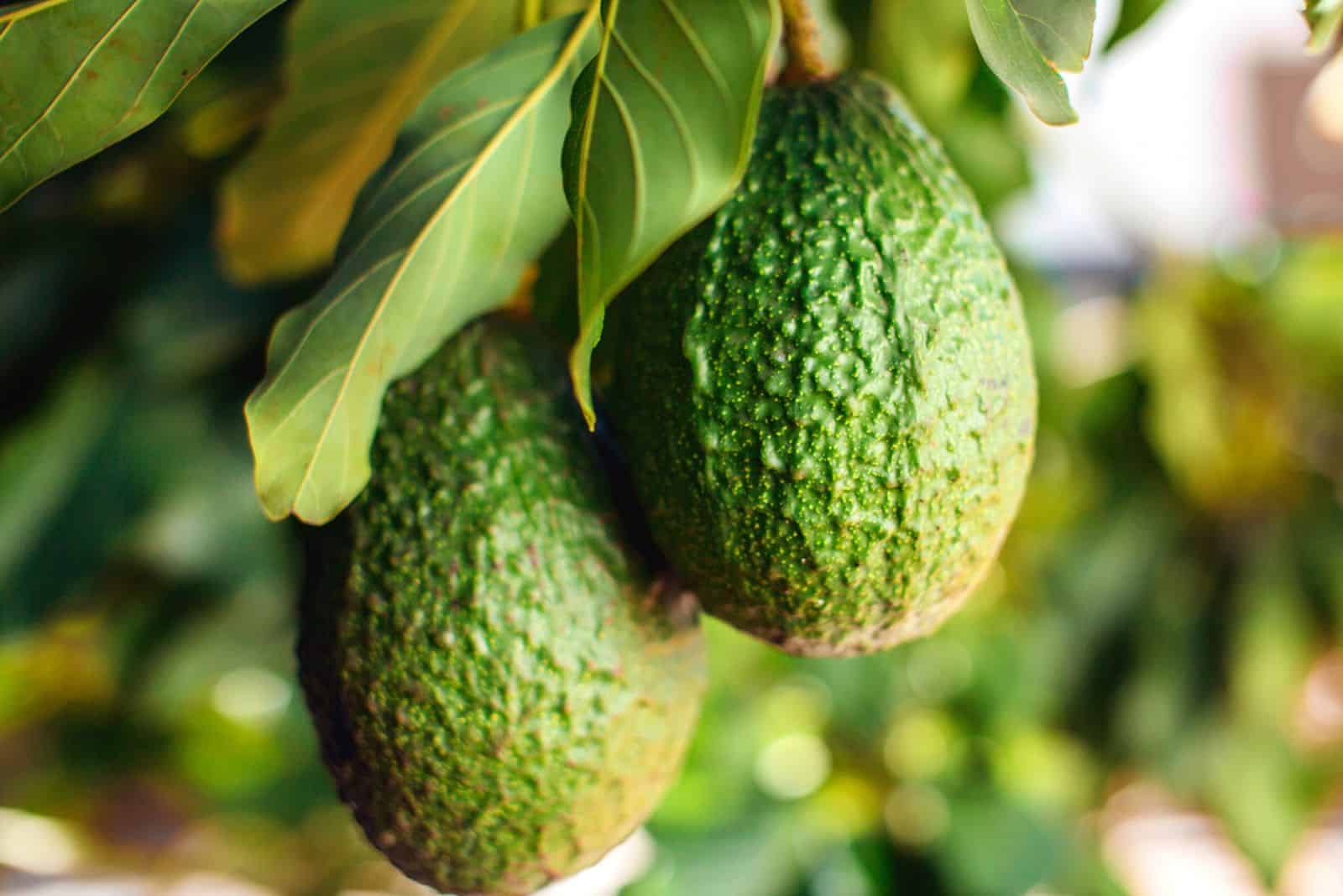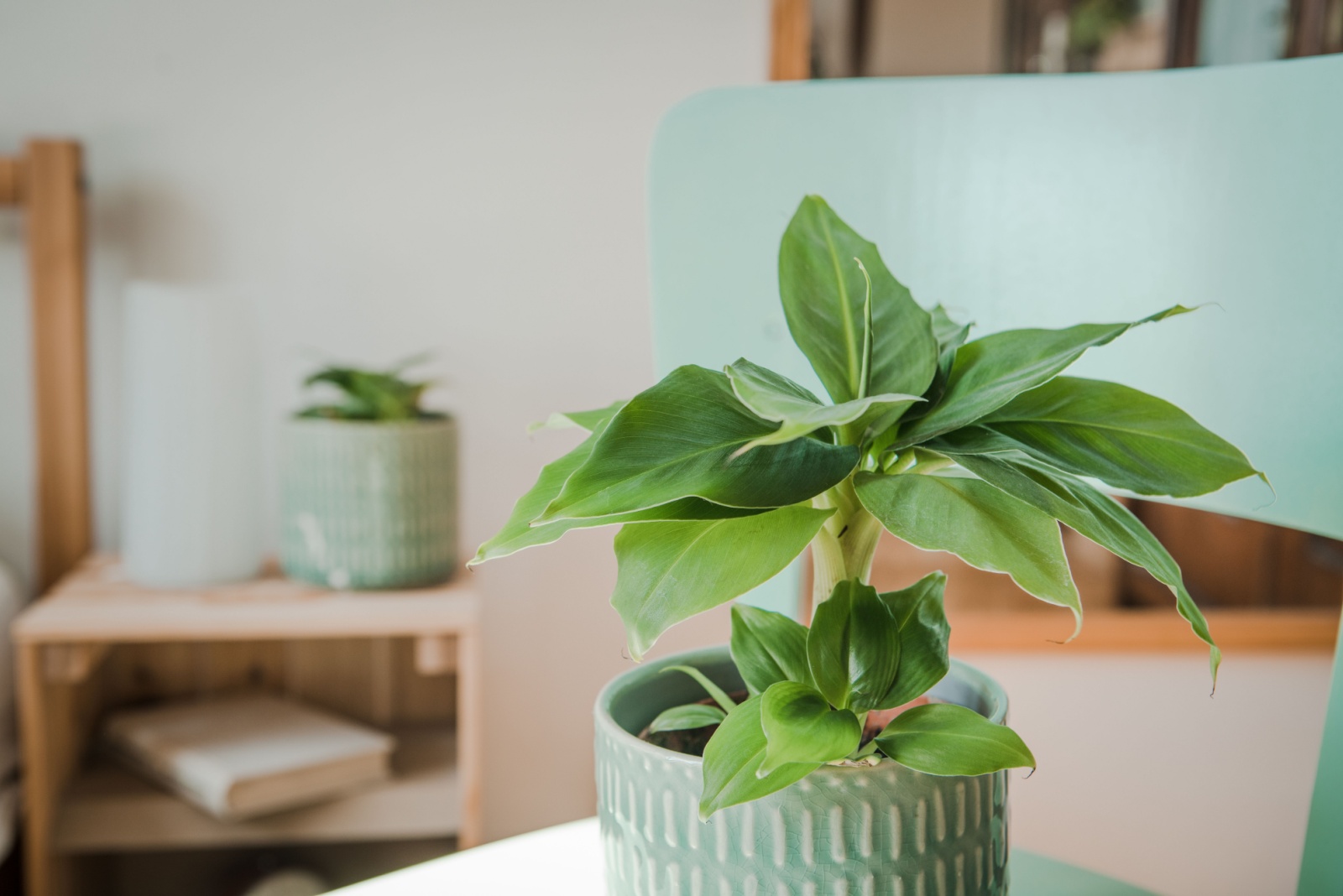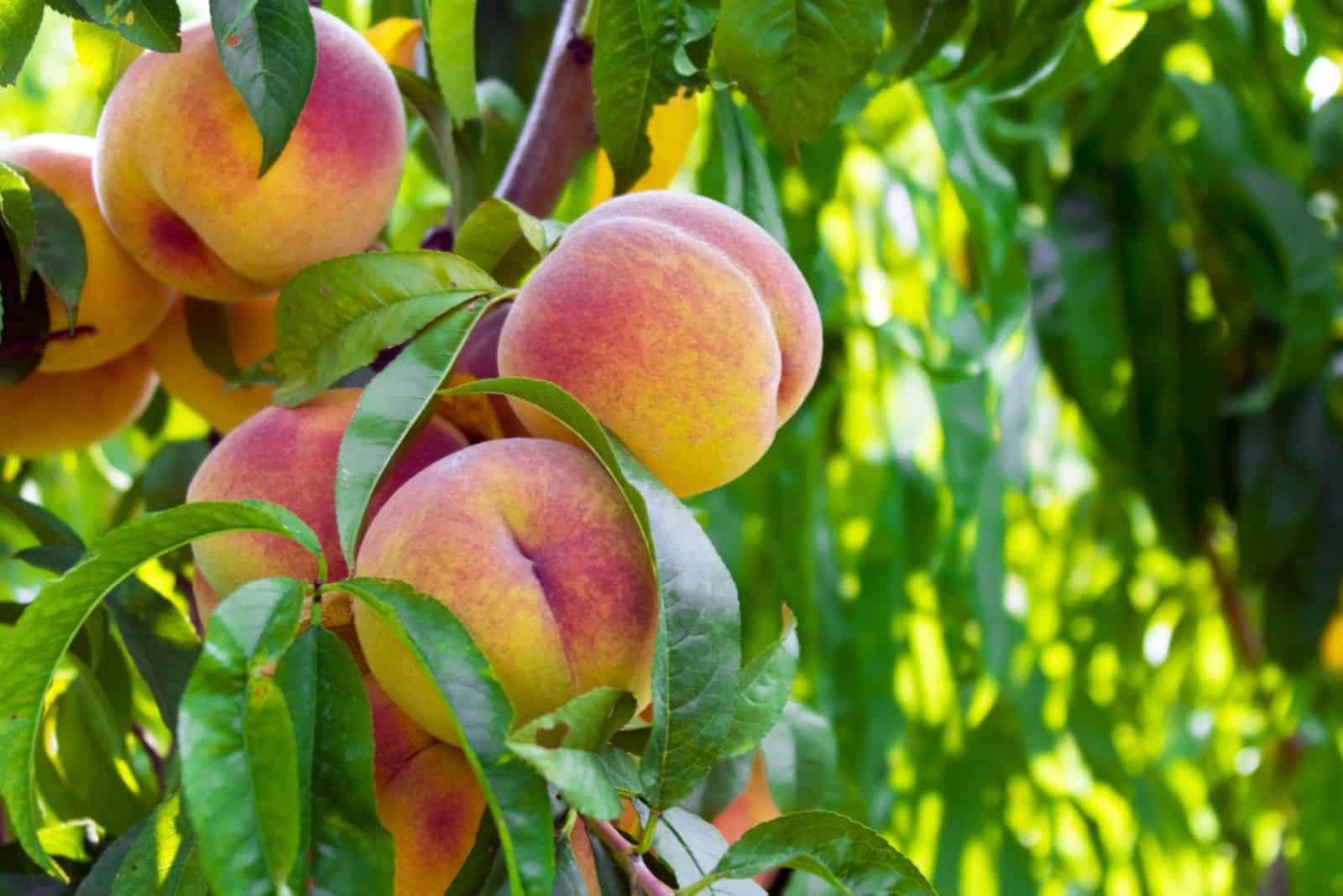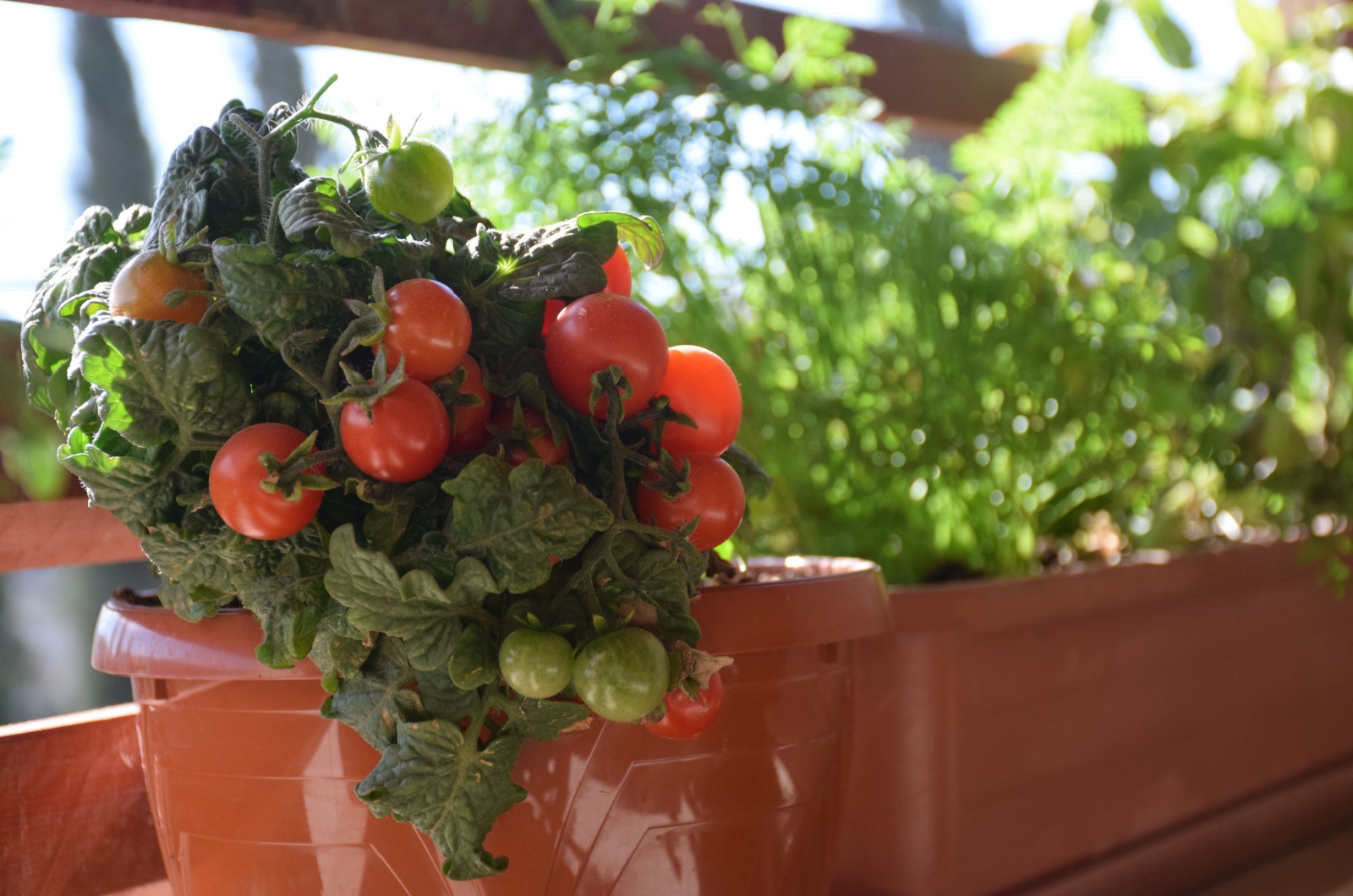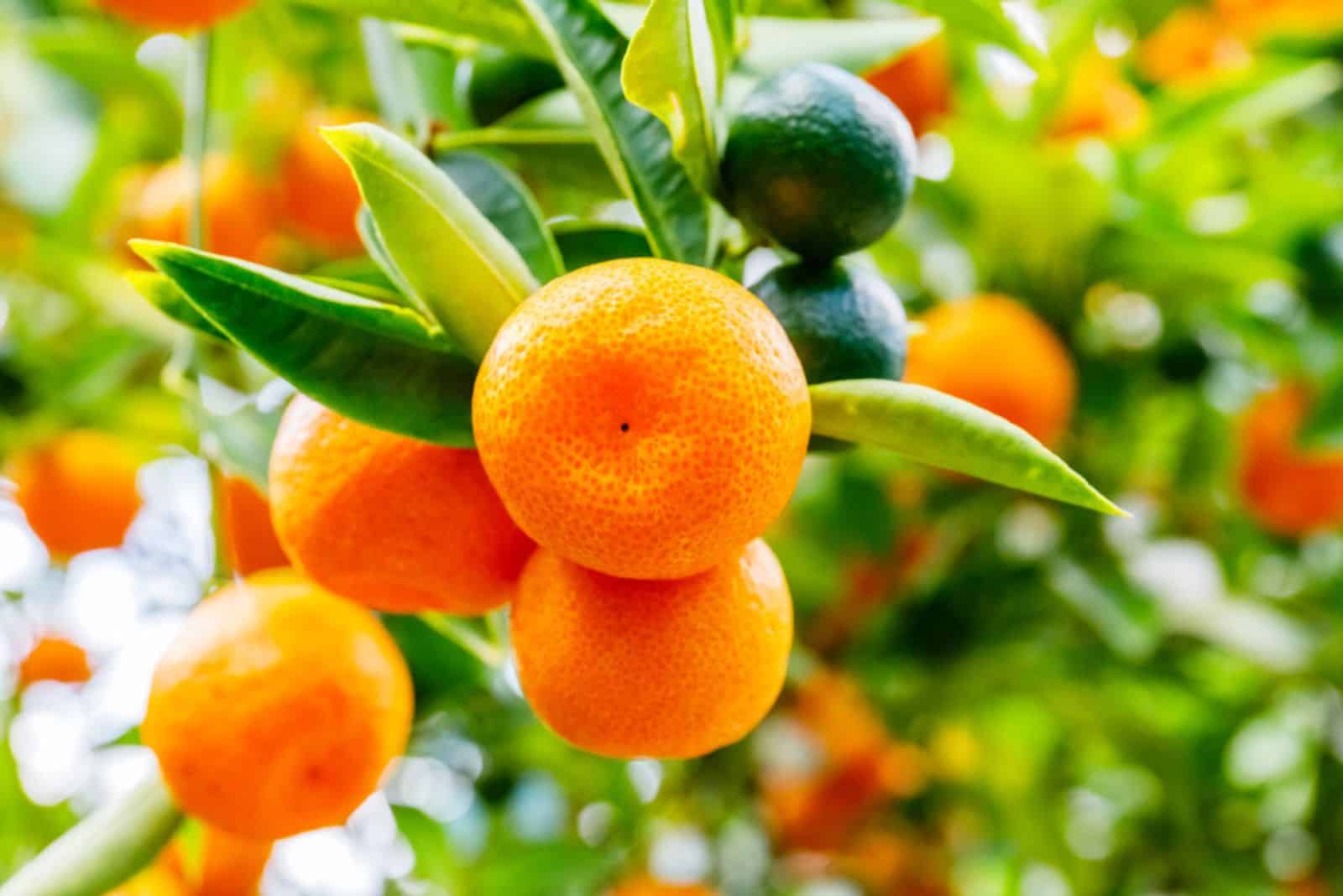If you don’t have enough garden space to grow fruit trees outdoors, why not try growing them inside instead? Although it might sound far-fetched, with the right knowledge and care you can enjoy the taste of fresh homegrown fruit from the comfort of your own home!
Indoor fruit trees not only add beauty and a touch of nature to your living space, but also the satisfaction of growing your own fruit – just imagine plucking ripe, juicy oranges, lemons, or even peaches in your own living room.
If you have a sunny window, a dedicated indoor garden space, or utilize grow lights, you can indulge yourself in the world of indoor fruit gardening.
In this article, we are going to cover selecting the right fruit tree varieties and understanding their growing requirements, so make sure you keep reading!
1. Calamondin Oranges
Calamondin oranges are small citrus fruits that look like miniature oranges. The tree has brown branches and light green leaves. These trees can grow indoors perfectly fine as they are self-pollinating.
Once these mini oranges emerge, they make any room look more cheerful!
What’s also great is that they are packed with vitamin C, antioxidants, and dietary fiber – all of which provide a good source of nutrients, boost the immune system, and help with digestion.
Calamondin oranges have a somewhat more tangy flavor with just a hint of sweetness, which is the reason they are commonly used for their zest and juice.
It is also quite easy to take care of this citrus tree. It should be grown in a well-draining soil that is also slightly acidic. The tree requires regular watering and can benefit from occasional misting.
Place it somewhere sunny and fertilize it every 3 weeks during the warmer months. Find a good citrus fertilizer and carefully follow the instructions displayed on the packaging.
2. Meyer Lemons
Meyer lemons slightly differ from other lemon varieties. Not only does the tree grow well indoors, but the lemons have a more rounded shape with smooth, thin skin.
This is actually a cross between a lemon and a mandarin orange, which is why they have a sweeter taste compared to regular lemons.
They are high in vitamin C and antioxidants, which support immune function, collagen production, and overall health.
When growing this tree indoors, find a sunny spot for it. If you are growing it in low-light conditions, you should definitely get some grow lights to support its growth.
You will notice that it blooms twice a year, and the tiny flowers can really spruce up your indoor garden. Lemons will take about 6 months to fully ripen.
Other than plenty of sunlight exposure, Meyer lemons also need well-draining soil and regular watering. Don’t forget to buy a high-quality lemon tree fertilizer and use it during the growing season.
With fertilizer, you will get more of these sweet lemons!
3. Kumquats
Here is another citrus tree that can be grown in the comfort of your home!
Kumquats are small, oval-shaped citrus fruits that have a sweet, edible skin and tart flesh. They are typically eaten whole, including the peel. They can be added to cocktails or used to make marmalade.
You can even use their leaves to make a delicious tea!
If you don’t like the sour taste, get the Meiwa variety, which is sweeter compared to other kumquat varieties. Nonetheless, they are all filled with vitamins and antioxidants that are great for health.
Besides their medicinal and culinary purposes, this evergreen tree can bloom twice a year and really make the room you put it in more vibrant and lively. They are slow-growing and often small, although they can grow up to 8 feet tall indoors.
Kumquat trees, like other citrus trees, prefer plenty of sunlight and an adequate amount of water to keep the soil moist but not waterlogged. Adequate humidity is beneficial for their growth.
4. Figs
Growing a Fiddle leaf fig comes with a lot of benefits, but have you ever considered growing a regular fig tree indoors?
You would end up with sweet and juicy fruit with soft textures, as well as a lovely tree that’s a great addition to any home!
The figs come in various colors and can be eaten fresh or dried. They are also a good source of dietary fiber and vitamins. They promote digestive health, provide antioxidants, and contribute to heart health.
It can be a bit trickier to get them to produce fruit indoors. They need to be exposed to lower temperatures in order to trigger fruit production, so put the plant outdoors when it gets colder (about 32-45 degrees Fahrenheit).
The tree thrives in bright indirect sunlight indoors. It grows best in well-draining soil. Water regularly but let the soil dry out between waterings.
5. Avocados
Most people enjoy fresh avocado for their breakfast, but just imagine picking it in your own kitchen!
Avocado trees produce creamy fruit with a rich, buttery taste. These fruits are known for their high healthy fat content and versatility in various dishes.
They are packed with healthy monounsaturated fats, vitamins, and minerals that support heart health and also contribute to healthy skin and hair!
I must mention that they are not easy to deal with when growing indoors – these are not your typical low-maintenance plants. Even while it’s entertaining to try growing an avocado pit from seed, you’ll be lucky to ever see fruit.
It’s better to start with live plants instead. This way, you won’t have to wait years and years for it to grow and mature. They can be challenging to fruit indoors but they do make attractive houseplants!
Avocado trees need a lot of sun and space. Regular watering and well-draining soil are also a must. If you decide to grow it either indoors or outdoors, then you must get familiar with the avocado seed growing stages.
6. Dwarf Banana Tree
The dwarf banana tree is a common houseplant that is famed for its majestic green leaves. While most indoor banana trees won’t bear fruit, there are still some that can produce delicious bananas even when cultivated indoors.
For instance, dwarf Cavendish banana trees can produce edible fruit in 3 to 5 years. The trick is to provide it with a lot of sunlight!
Even though we are talking about a dwarf variety, it can still grow quite big, which is why
you should grow it in a large tub. Plant it in loamy, aerated soil that drains well.
Make sure that the soil is always moist. This can be done by checking the soil before watering. Water it when the potting medium’s top few inches are dry.
These trees also like a lot of humidity, so ensure that the humidity levels are at least 50%. They benefit from occasional feeding with a balanced fertilizer, especially during the growing season.
They also thrive in temperatures from 75 to 80 degrees Fahrenheit during the day, and 65 to 70 degrees Fahrenheit during the nighttime. If left in drought or exposed to dry air, this tree’s leaves will scorch.
7. Peaches
Although it might seem hard to imagine growing peaches in your bedroom or living room, it’s something that can be done!
Just like with any other tree, you should look for dwarf varieties that are self-pollinating, such as Reliance or Redhaven peaches. They fill the room with a fragrant aroma and juicy peaches that you can snack on whenever you want.
Even though we are talking about dwarf varieties, they can still grow quite large – these trees can grow about 6 to 10 feet tall!
Similarly to the fig tree, they also need to be exposed to colder weather in order to trigger fruit production.
As well as that winter chill, peach trees need at least 6 hours of direct sunlight during the day. They grow best in well-draining soil. Regular watering and occasional pruning are required.
8. Cherry Tomatoes
Even though we frequently associate tomatoes with salads and other veggies, they are actually classified as fruit.
Cherry tomatoes are small, bite-sized tomatoes that are typically sweet and flavorful. They come in various colors, including red, yellow, and even purple!
It can be pretty tricky to grow them indoors as they need pollinators like bees in order for plants to produce those miniature tomatoes. However, if you master pollinating the plants on your own, there’s no reason why you can’t grow them indoors.
Tomatoes grow nicely in large containers and pots because they have room for their roots to spread out. These larger containers also provide you the chance to use staking and trellising more effectively, which is crucial for strong plant growth.
Adequate drainage and at least 8 hours of direct sunlight exposure are crucial for proper tomato growth. Regular watering is also required.
Opt for smaller varieties such as Pink ping pong, Yellow pear, Tommy toe, or Tiny Tim.
9. Dwarf Lime
If you enjoy a delicious key lime pie, then you should definitely consider growing your own limes!
The dwarf lime is a compact citrus tree that is well-suited for indoor growing. It offers both ornamental value and the opportunity to harvest fresh, tangy limes right in your home.
Just like cherry tomatoes, this tree also needs at least 8 hours of bright direct sunlight a day for proper growth and development. You should invest in a set of grow lights if you can’t find a sunny location for it.
The tree also likes potting soil with good drainage and regular watering to maintain a constant moisture level without becoming overly saturated. It thrives in temperatures between 65 and 80 degrees Fahrenheit.
Avoid buying trees that have already started flowering and fruiting. It’s best to transplant the tree first and take good care of it, but most importantly to be patient!
The same thing applies with any indoor fruit tree for that matter. You can’t expect for them to bear fruit as soon as you bring them home. Trees need time to adjust to their new environment, but also to develop and mature.
I hope you enjoyed this article.
Until next time!

